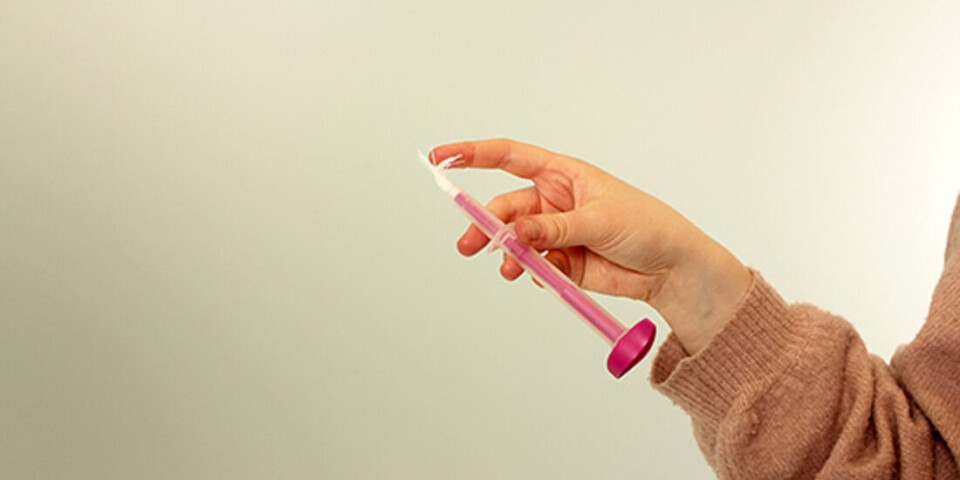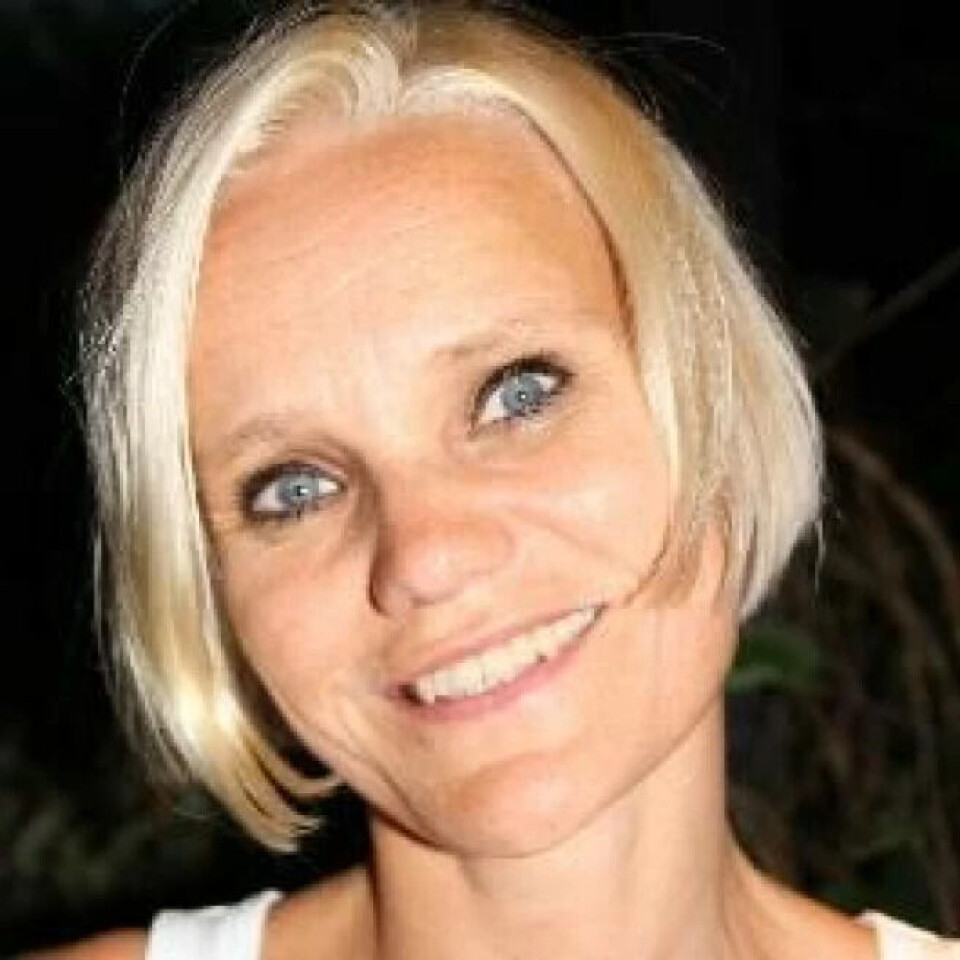THIS ARTICLE/PRESS RELEASE IS PAID FOR AND PRESENTED BY NTNU Norwegian University of Science and Technology - read more

Home tests can save more women from cervical cancer
A simple test can save lives. Three out of four women who died of cervical cancer in the screening age of 25-69 years had not had a Pap smear in the past three and a half years.
In 2021, 345 women were diagnosed with cervical cancer in Norway. 79 women died from the disease.
The vast majority of people who get cervical cancer develop the disease due to a long-term human papillomavirus (HPV) infection.
“It’s extremely common to get infected by the HPV virus one or more times during your lifetime,” Ingrid Baasland, a gynaecologist and researcher at NTNU, says.
The vast majority of infections go away on their own without causing illness. However, in some people the HPV infections can cause cell changes, and some cell changes can develop into cancer.
In the vast majority of people, this development takes place over many years, making it possible for screening to pick up precursors to cancer and remove them.
Cervical cancer screening programme saves many
The Norwegian Cervical Cancer Screening Programme (NCCSP) is a national screening programme that was introduced in 1995. All women between the ages of 25 and 69 are encouraged to have a cervical examination every three or five years.
The programme has saved many lives.
“Every year, at least 700 cases of cervical cancer are prevented in Norway through the screening programme,” Baasland says.
But more than one in four women choose not to participate in the screening programme for cervical cancer.
In a recently published study, researchers investigated over 800 deaths due to cervical cancer in the period 1998-2009.

Majority of women who died did not get a Pap smear
“In our study, we looked at the connection between having had a Pap smear and the subsequent risk of dying from cervical cancer. We didn’t have information on whether the samples were taken as part of screening healthy women or whether they were taken because of gynaecological complaints,” Baasland says.
The new study shows that 3 out of 4 of all the women who died due to cervical cancer in the screening age of 25-69 years had not adhered to the recommended Pap smear schedule in the last 3.5 years. The statistics become even more alarming when including women who were over age 69.
Eight out of ten women who died were either not part of the screening programme or had chosen not to participate.
“Important to note is that the screening for cervical cancer is good at catching disease, but the most important factor for reducing the risk of cancer is for more women to participate in the screening programme,” Baasland says.
Several reasons for dropping regular testing
There are several reasons why women choose to skip regular testing. Common reasons include:
- The examination itself is experienced as embarrassing
- Fear of pain
- Previous negative experiences with gynaecological examination
- Women who have experienced sexual abuse may experience the gynaecological examination as too stressful
- Some women believe they are not at risk of getting cervical cancer
- Some women do not understand the connection between Pap smears and the risk of cancer
- Difficult to set aside time to go to the examination
- Some women experience a male, foreign or young GP as an obstacle to attending
Women with lower socio-economic status or with an immigrant background attend screening less often.
Home tests increased participation
A recent study investigated whether home testing would increase participation in the cervical cancer screening programme.
Baasland took part in a research project involving 6,000 women who were divided into three groups. What they had in common was that they had not taken part in screening for at least 10 years, despite many reminders.
The women were divided into groups as follows:
- One group received an additional reminder to make an appointment with a doctor to take a Pap smear. 5 per cent of this group went to the doctor and had a Pap smear.
- The second group received an offer to order a self-sampling HPV home test that they could carry out themselves. 17 per cent of this group participated.
- The third group was sent the HPV home test without having to do anything. In this group, 28 per cent participated.
Can send out home tests
“Almost everyone who was diagnosed with the HPV virus chose to have the recommended follow-up Pap smear by a doctor. This result supports the cervical programme’s decision to offer a home test specifically for women who, for various reasons, had not been screened for many years,” Baasland says.
According to the Cervical Programme, the goal is to be able to start sending HPV home tests to priority groups in 2023/2024, and in that way increase participation in the programme.
The plan is for GPs or other relevant healthcare personnel to be able to offer certain patients – who either do not want to get or have great difficulty carrying out a gynaecological examination – a home test starting in the autumn of 2023.
The groundwork is also being laid to send out home tests during the first half of 2024 to women who have not been screened for 10 years.
Detects precursors to cervical cancer
During 2023, the Cervical Programme will be modified so that all women aged 25-69 will have their cervix examined with an HPV test first, a so-called HPV screening.
If a woman tests positive for HPV, the sample will be further examined by looking at the cells under a microscope. Both of these examinations can be done from the same sample. The cervical screening is done in the same way as before.
“HPV testing has been shown to detect more precursors to cancer and thus prevent cancer to a greater extent than Pap smears. On the other hand, HPV testing will catch a lot of HPV infections that resolve on their own, so we have to balance this out so that we reduce the risk of overdiagnosis and overtreatment. The Pap smear works well when the person examining the sample under the microscope knows that it is a positive HPV test, because then they’ll be extra attentive. But regardless of the screening method, the most important thing is still to regularly participate in the screening programme,” Baasland says.
A vaccine against the HPV virus has been offered to all girls in the 7th grade since 2009. In 2022, the first vaccinated cohort turned 25 and was invited to participate in the Cervical Cancer Programme.
In the future, women will therefore receive even better protection.
See a doctor if you have symptoms
For women who did not take the vaccine before starting sexual relations, screening will be the most important thing they can do to reduce their risk, although the HPV vaccine can also offer these women some protection.
“Even if you’re vaccinated, you should attend the Cervical Programme. However, it will never be possible to reduce the risk of cervical cancer to zero, even with screening and vaccination in place. If you experience symptoms, you should see a doctor,” concludes Baasland.
References:
Aasbø et al. HPV self-sampling among long-term non-attenders to cervical cancer screening in Norway: a pragmatic randomised controlled trial, Br J Cancer, 2022. DOI: 10.1038/s41416-022-01954-9
Baasland et al. Cervical cancer mortality in Norway according to screening attendance and age, Acta Obstet Gynecol Scand, 2022. DOI: 10.1111/aogs.14402
Leinonen et al. Personal and provider level factors influence participation to cervical cancer screening: A retrospective register-based study of 1.3 million women in Norway, Preventive Medicine, vol. 94, 2017. DOI: 10.1016/j.ypmed.2016.11.018
Read more content from NTNU:
-
More than 120,000 Norwegians suffer from work-related anxiety
-
Forever chemicals affect ducklings' genes while they are still in the egg
-
Why are pregnant women in Norway so worried?
-
Politics on Facebook: Populist parties choose divisive issues on purpose
-
Social media is connected to cyberbullying – but not how we thought
-
Forskere ved NTNU får nesten 24 millioner av EU for å lage nye strømomformere





































